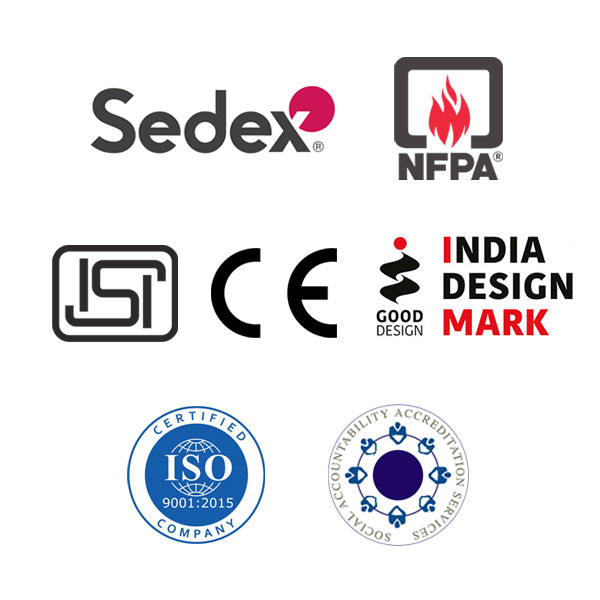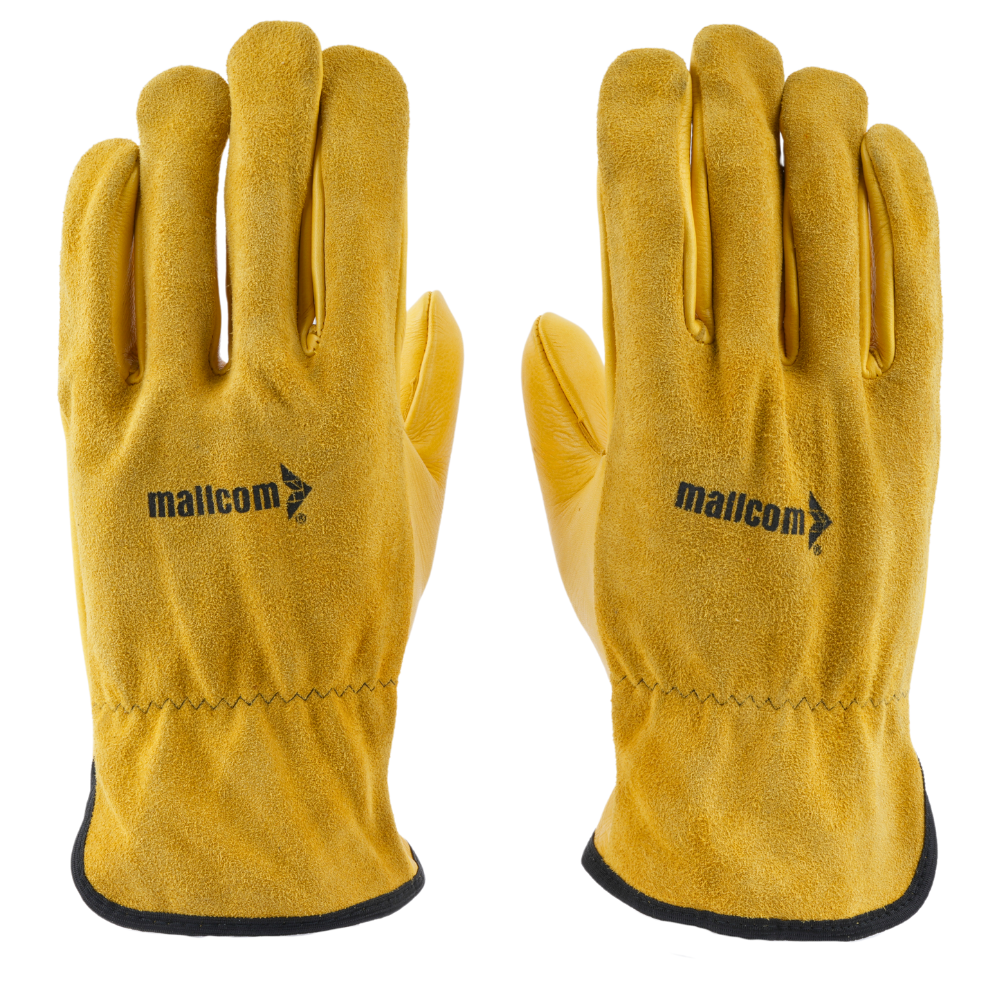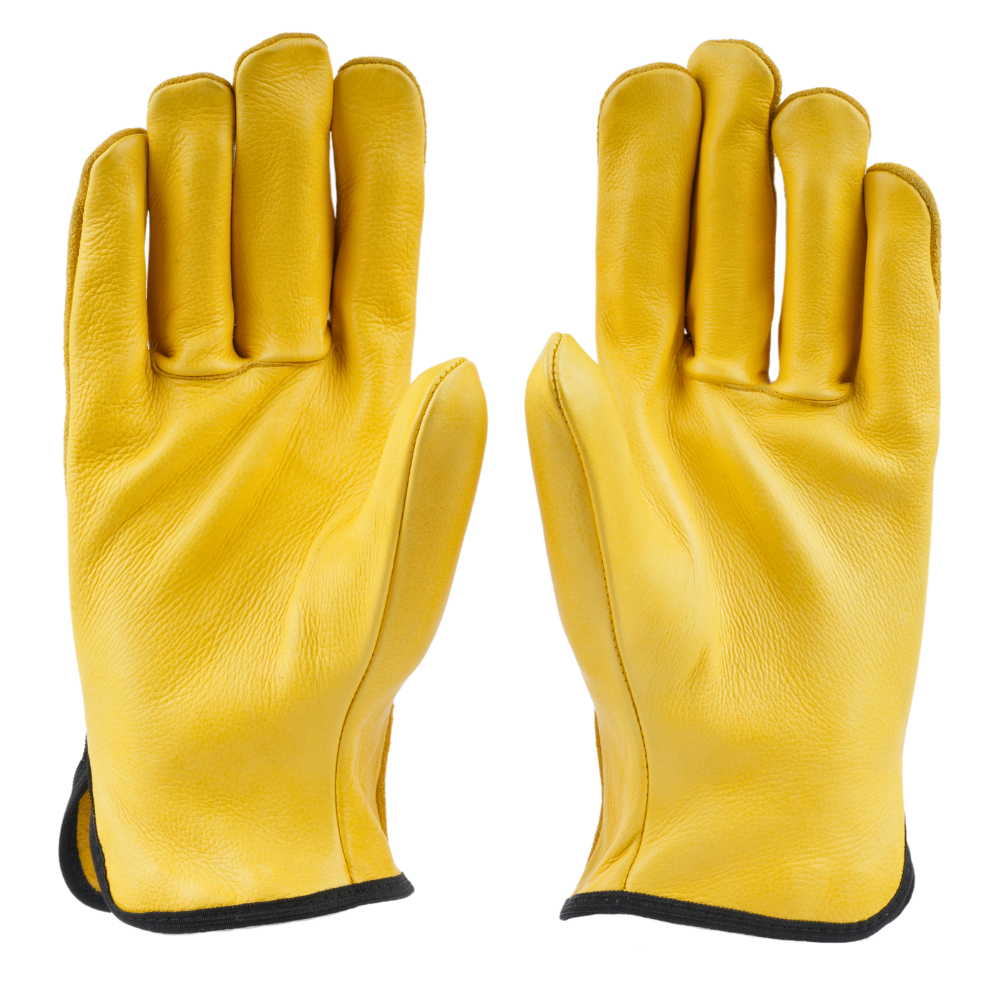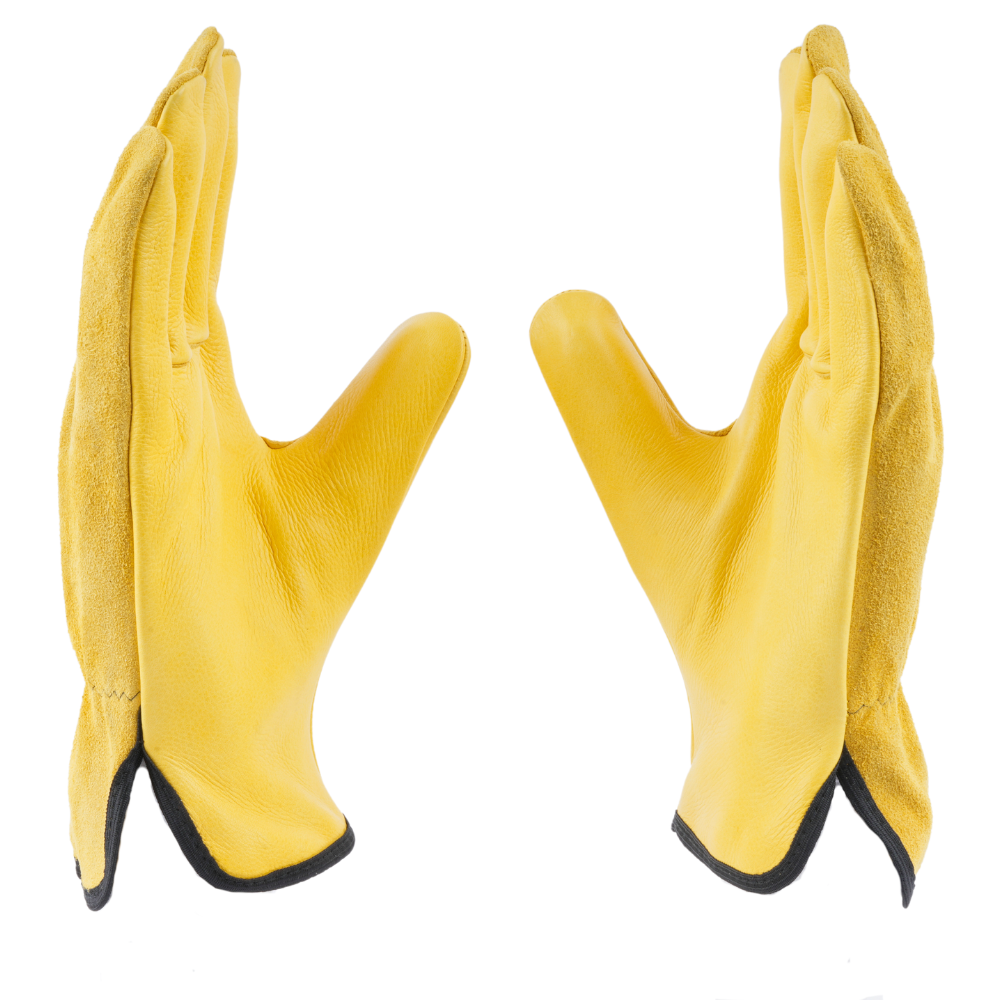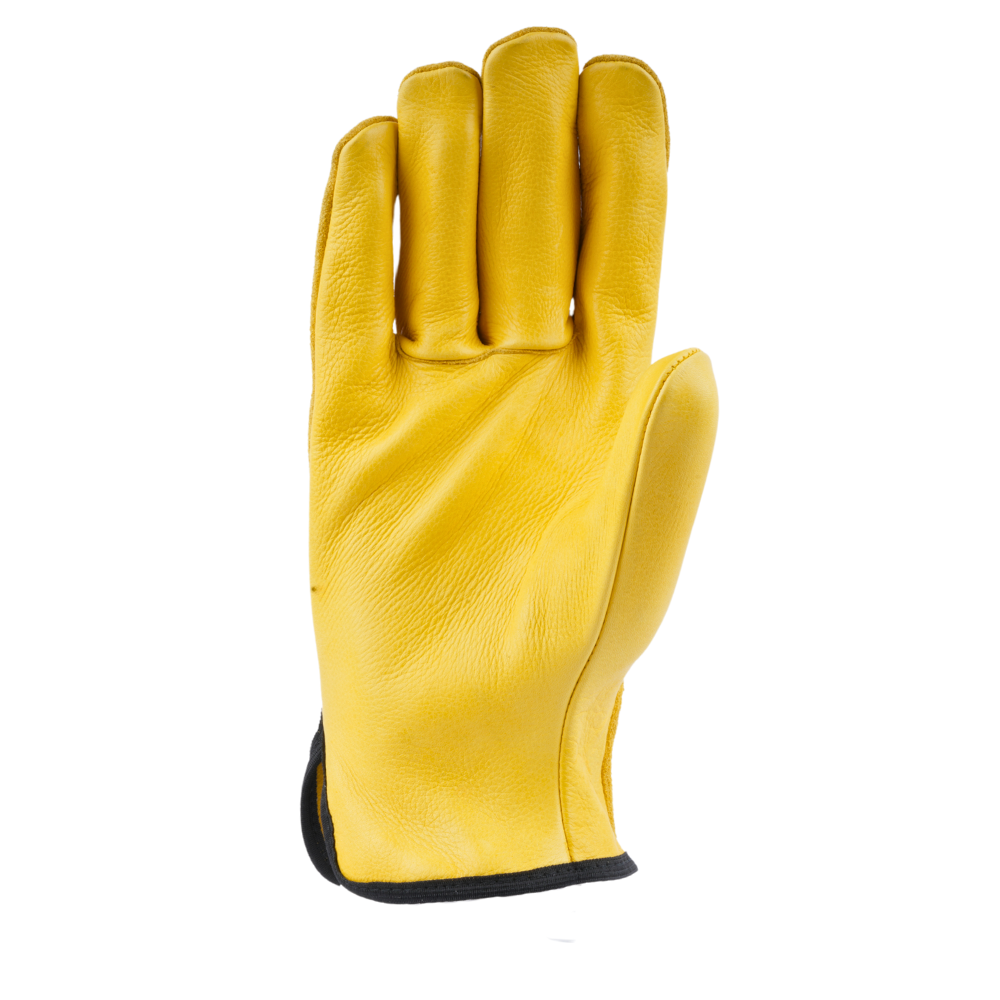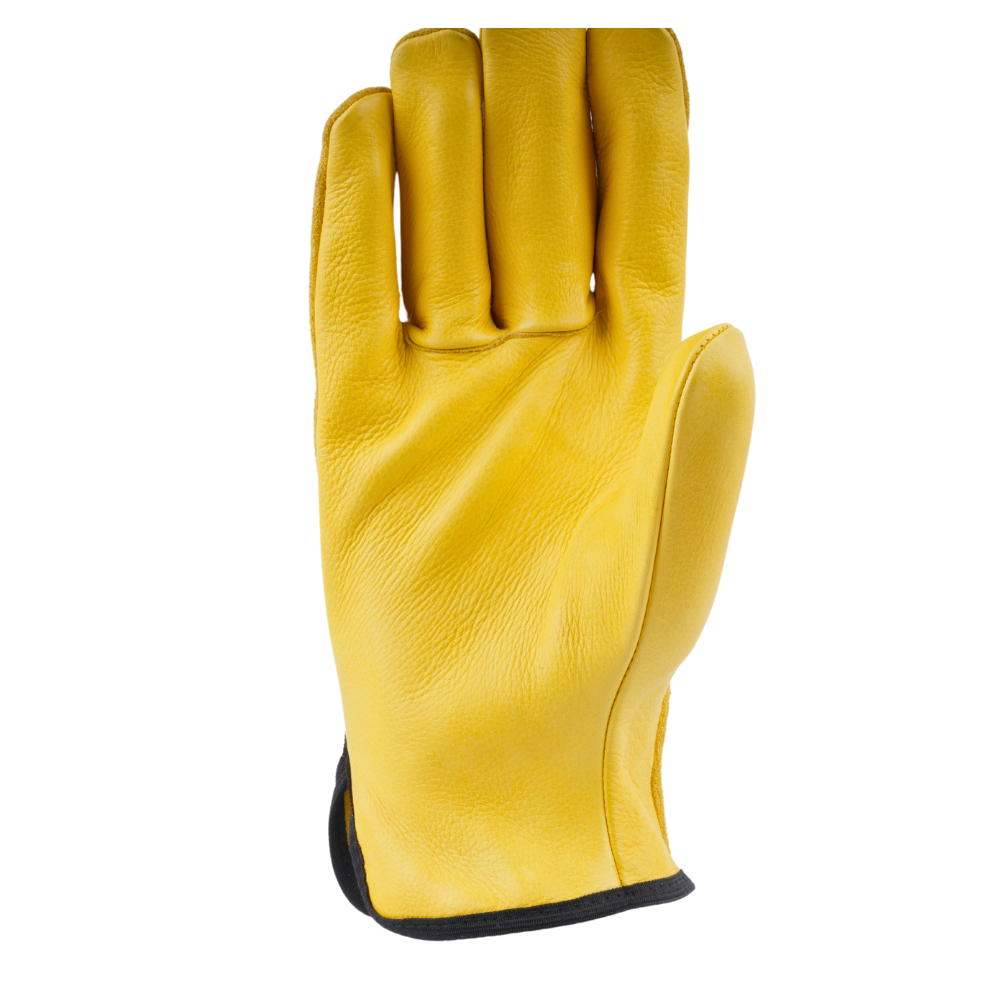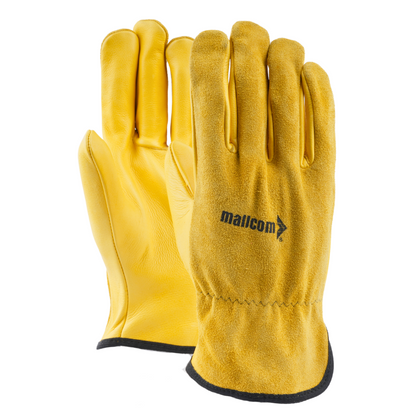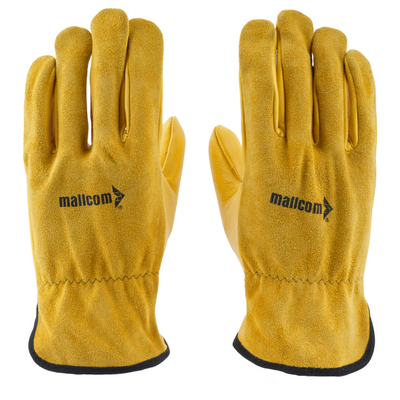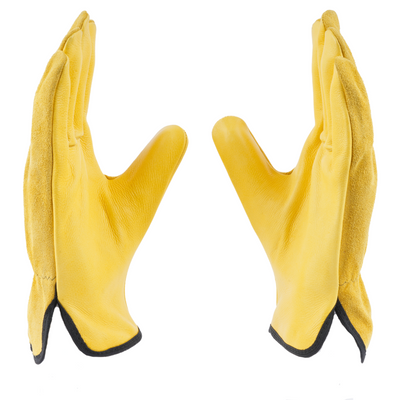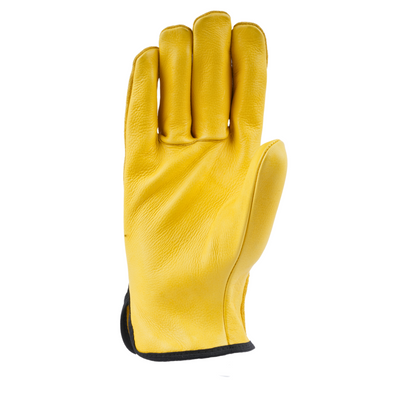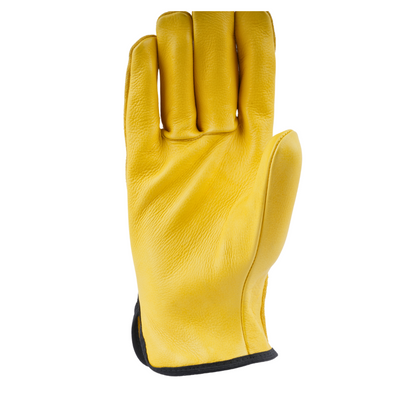D762
Share
Driver Gloves
-
Material Composition:
Palm: Made of yellow-grain leather, which offers durability, flexibility, and a good grip, essential for driving and handling tasks.
Back: Constructed from yellow split leather, providing additional durability and resistance to abrasion.
Cuff: Equipped with an elasticized cuff, ensuring a secure fit and flexibility during use.
Binding: Synthetic black binding reinforces the edges of the glove, enhancing its durability and longevity.· Specifications:
Liner: Cotton cloth lining offers comfort during wear.
Palm Length: 260 mm (size 10), ensuring a proper fit for most users.
Weight per Pair: 150 (±05) grams (size 10), indicating a lightweight design suitable for prolonged wear without causing discomfort or fatigue.
Abrasion
Grip
Dry Environment
Cuff
EN 388:2016+A1:2018
Delivery & Services

Easy Return
with our 15 days return poicy

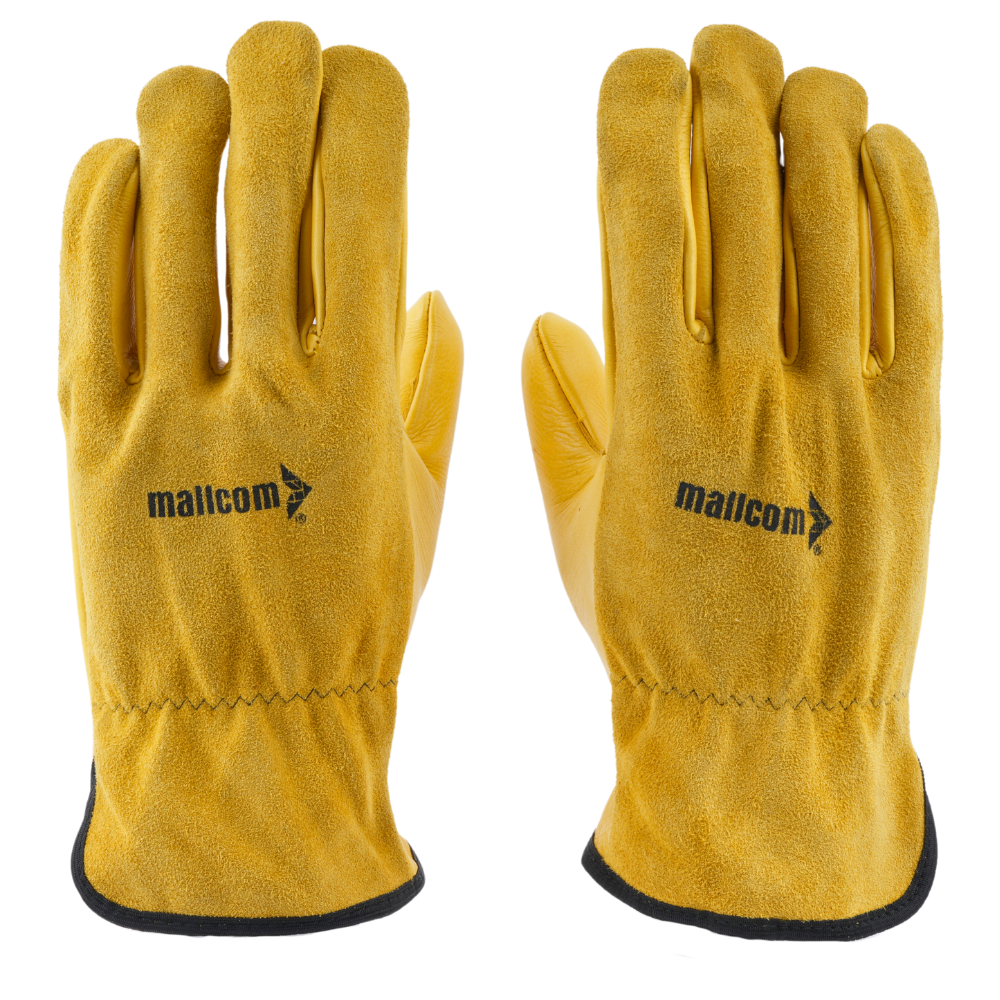
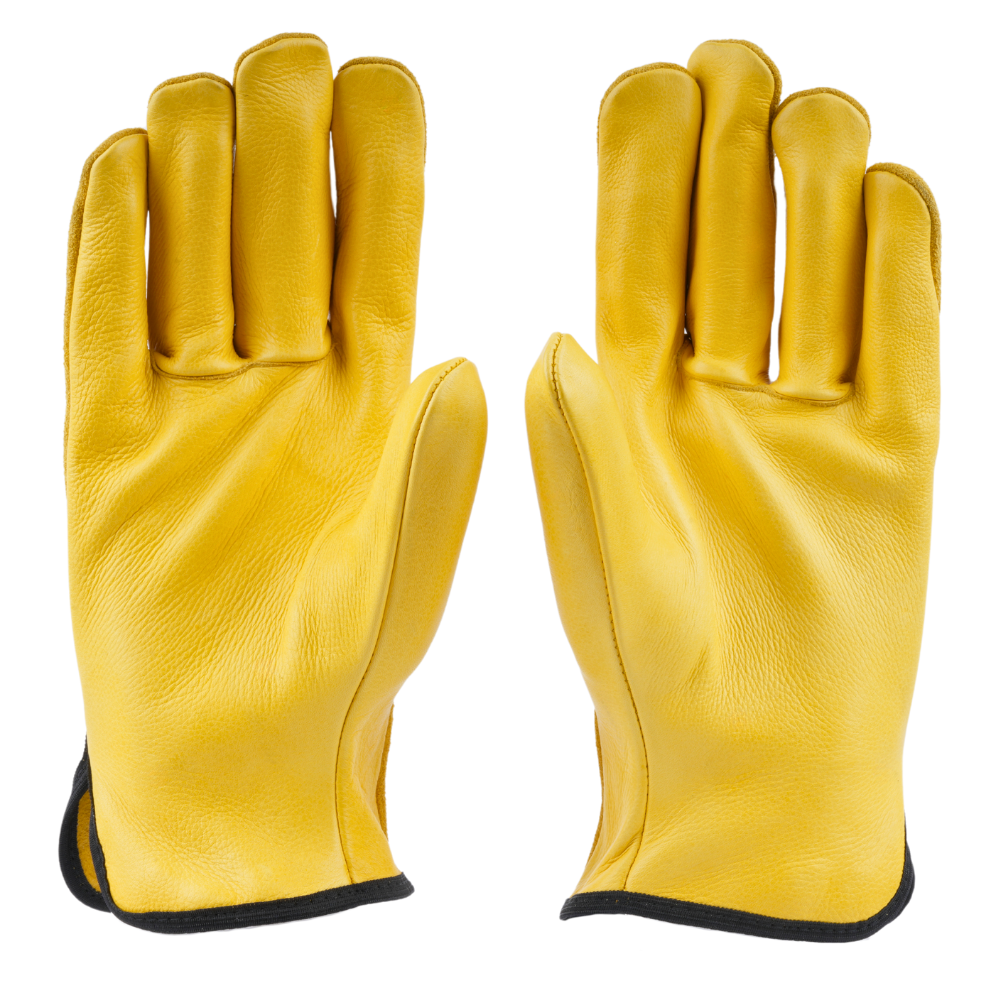
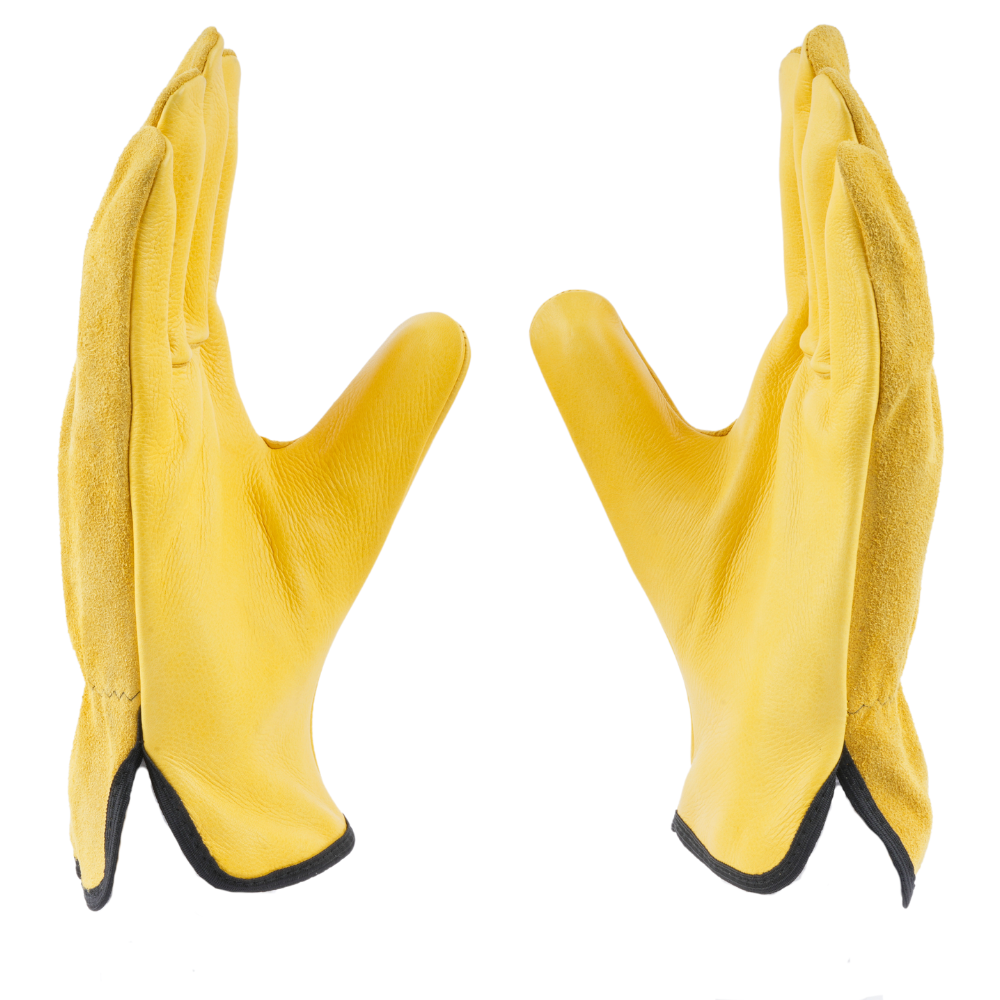
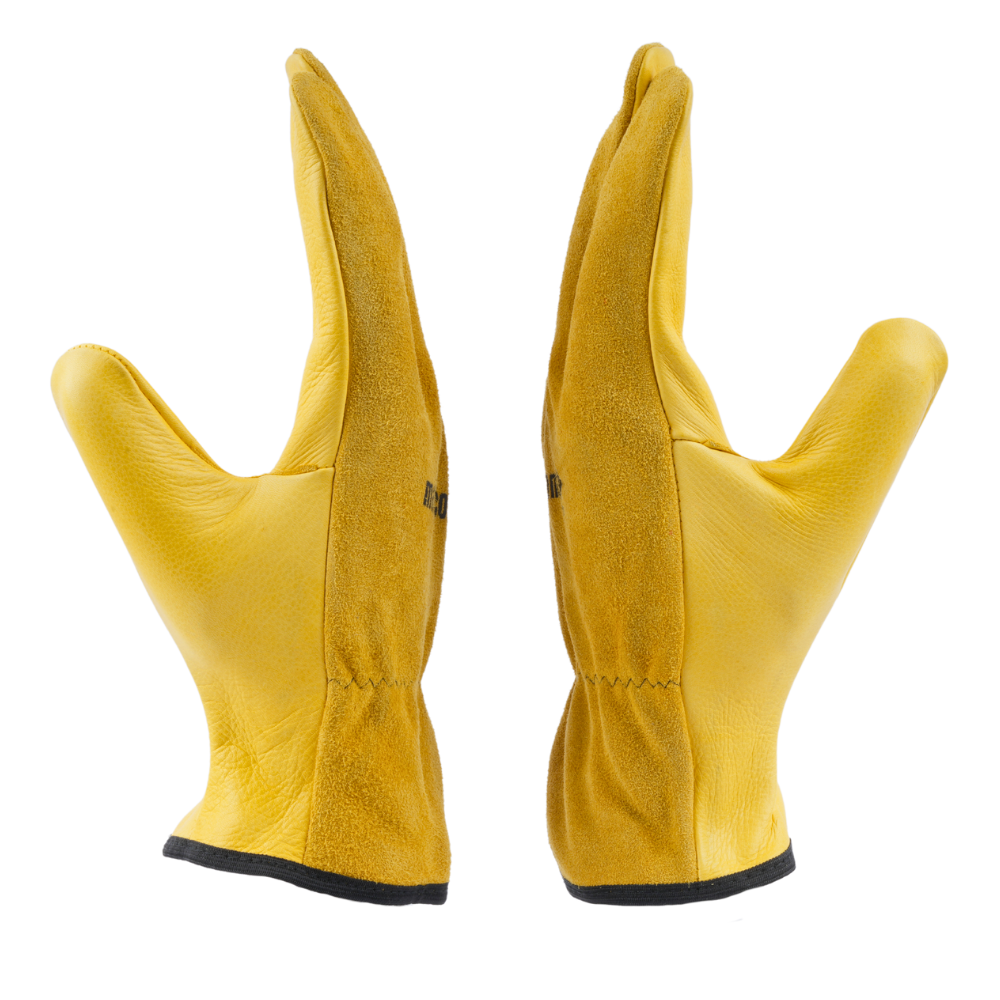
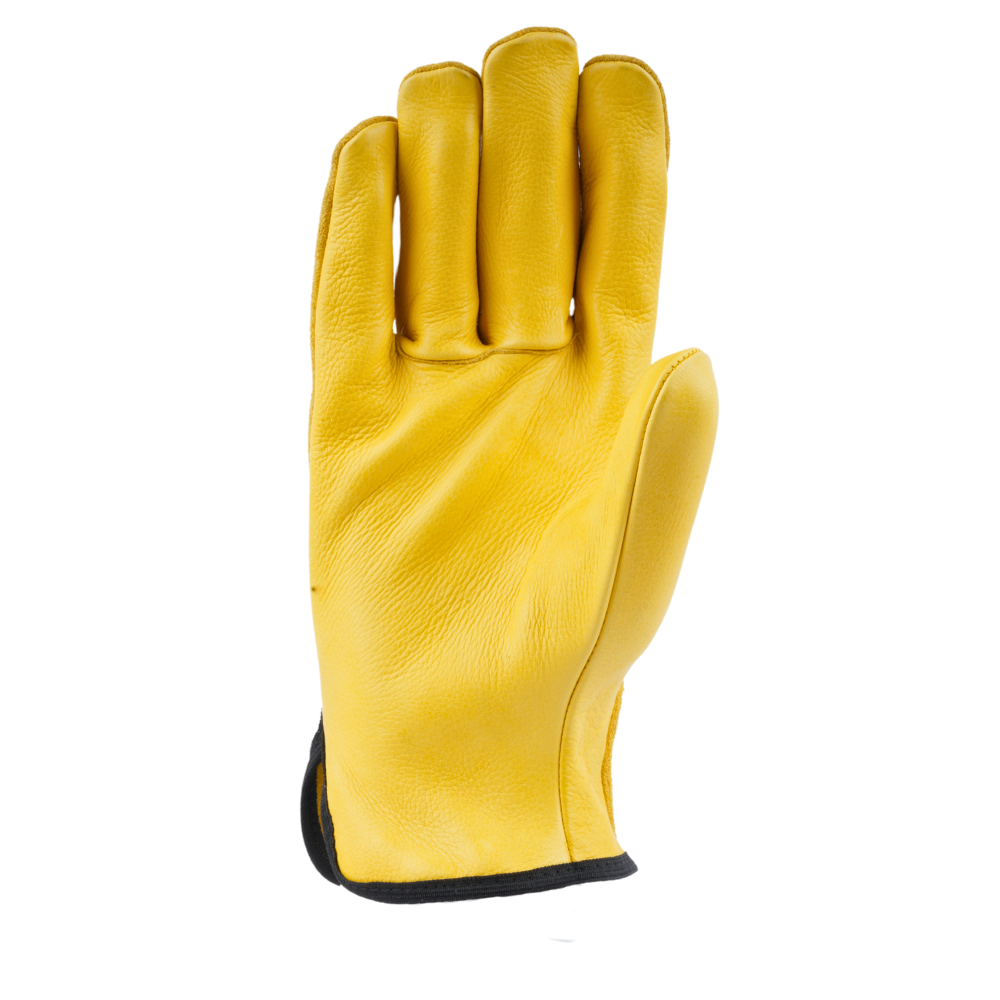
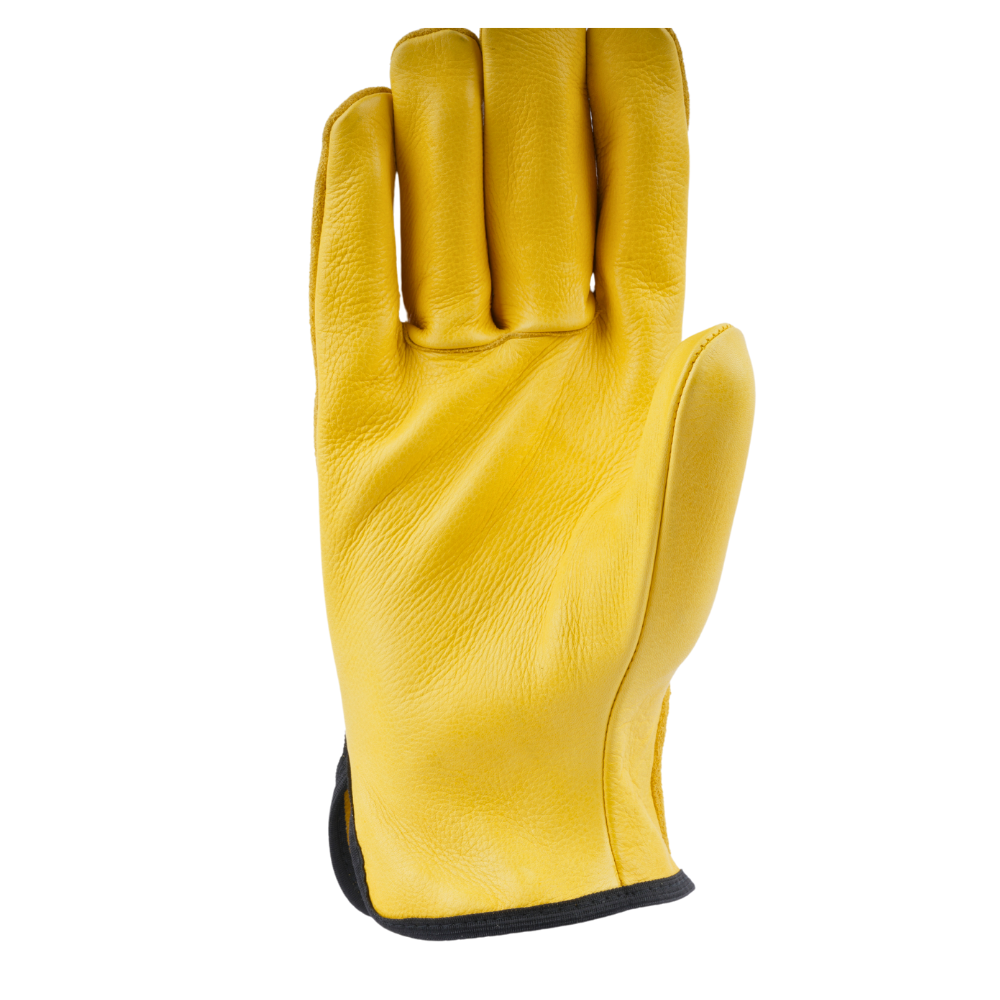
ABOUT THE DESIGN
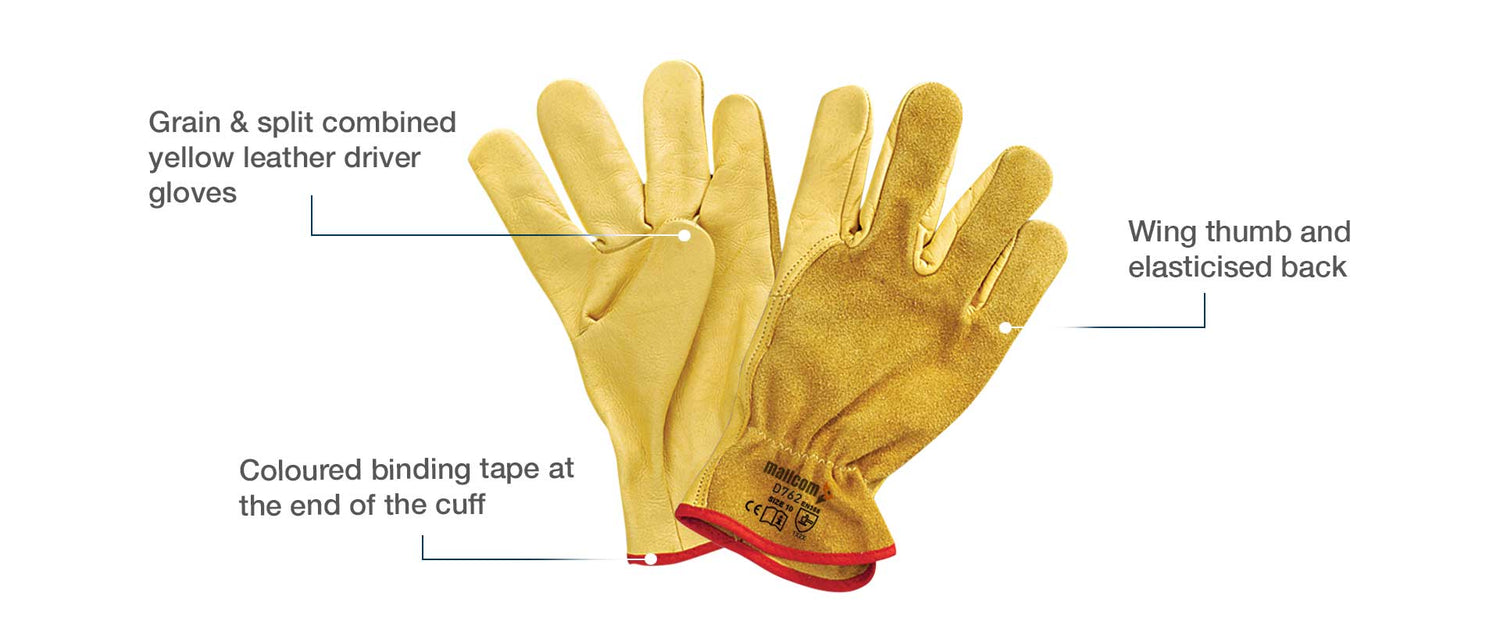
USEFUL IN THESE INDUSTRIES
CONSTRUCTION
IRON & STEEL
LOGISTICS
MANUFACTURING

Product Features
ABOUT THE DESIGN
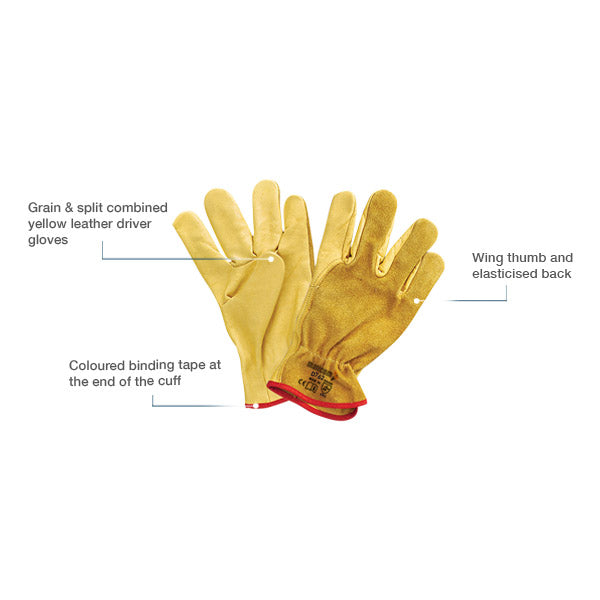
USEFUL IN THESE INDUSTRIES
CONSTRUCTION
IRON & STEEL
LOGISTICS
MANUFACTURING
Product Details
